Types of supports for grapes and their use
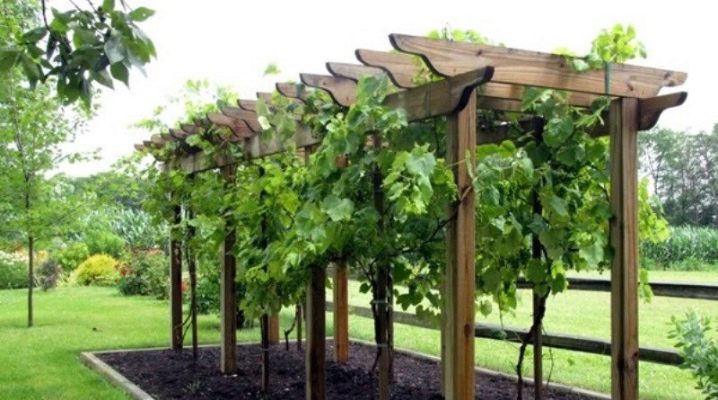
Grapes are one of the most sought-after plants among gardeners that require support. It is worth considering in more detail what it is for, what types of supports are distinguished and how to assemble the structure with your own hands.
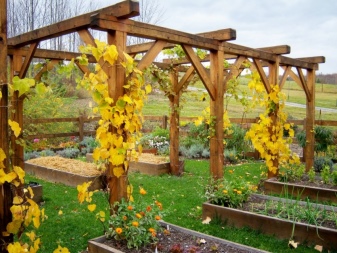
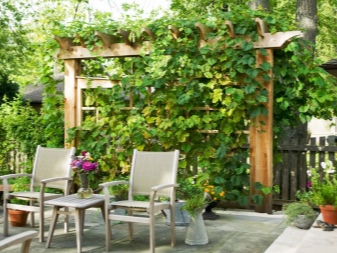
Appointment
The peculiarity of the vine is the lack of a strong stem, which does not allow it to grow vertically on its own. The grapes need support, which can be provided by special structures. In addition, the trellis prevent rotting of the bunches of plants, which, under their own weight, tend to fall to the ground. Finally, the trellis increases the heating of the plants and allows the sun's rays to reach even the most closed shoots.
Key benefits of the grape support:
- saving garden space by directing the vine upward;
- improving the quality of foliage lighting, accelerating the photosynthesis of the vine and increasing yields;
- improvement of the characteristics of the fruit, which is achieved due to the uniform exposure of sunlight to the grape bunches.
Additionally, the design provides timely ventilation of the plants, which has a positive effect on the immunity of the vine and prevents the risk of spreading diseases.

Species overview
In the first two years of growth, the vine is attached to the stakes, placing them next to the seedlings. Ropes are pulled between the small posts, along which the grapes begin to curl upward. Sometimes, instead of ropes, wire or laces made of nylon fabric protrude.
However, after the first two to three years, it becomes necessary to install a reliable trellis, which will act as an effective support for the grapes, strengthen the health of the plant and increase the quality of the fruit. Today, there are several types of tapestries, the main ones should be considered in more detail.
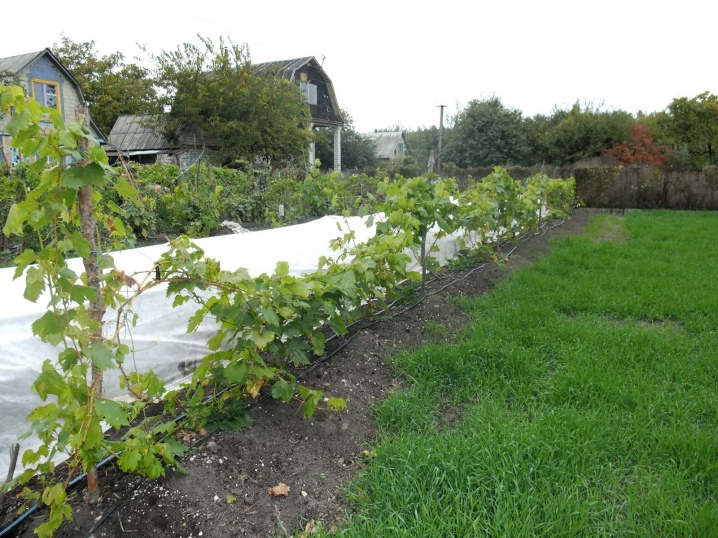
Half arch
The most popular option for supports, the disadvantage of which is the high cost and high labor costs. Basically, such structures are installed for growing different varieties of grapes, including wild ones.
It is recommended to give preference to such structures if you plan to grow single-row vines or arrange an unusual recreation area near the house, a gazebo.
The semi-arched structure will decorate any landscape and act as a decorative canopy that protects from the sun's rays. Some models have a plastic cover on the top, which will make the seating area more comfortable and prevent rainfall from entering.
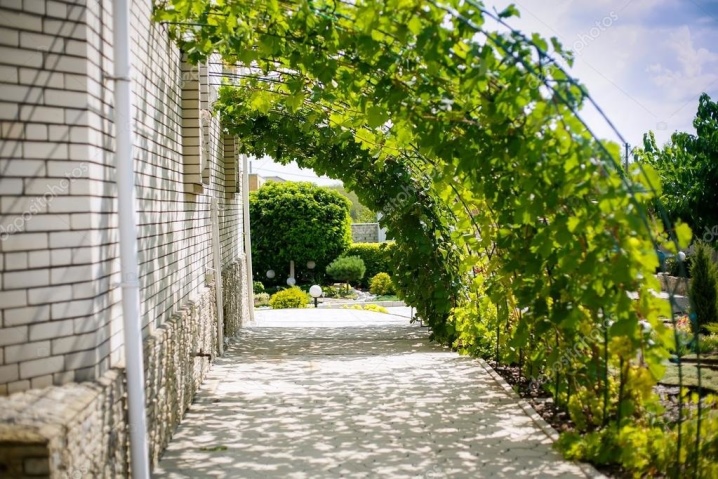
Straight columnar
An easy option for a structure that can be assembled by hand. Columnar supports for grapes are a system of several columns installed vertically, between which are stretched:
- fishing line;
- metal wire;
- cables.
A minimum distance of 40 cm is maintained between the hinged materials. Columnar trellis are additionally divided into:
- single (also called single-plane), this is a common option;
- double (two-plane), set mainly for growing large volumes of grapes.

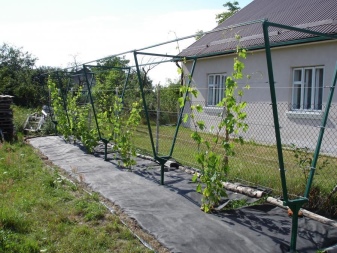
Typically, trellises are made of square steel pipes or corners with shelves from 40 to 70 mm. Sometimes channels with a width of 40 mm or more are used to install supports. At low loads, preference is given to wooden bars, the surface of which is treated with anti-rotting compounds.
The best solution for the supporting structure is steel pillars. A distance of 2-2.5 meters is maintained between them. The maximum height of the supports reaches 2.3 meters, and the diameter does not exceed 6 cm.
A feature of two-lane trellis is considered V-shaped digging in of pillars with their subsequent cementation.
Such a constructive solution increases the reliability and stability of the supports, therefore it is important to carefully measure the distance between the rows before pouring the foundation supports.
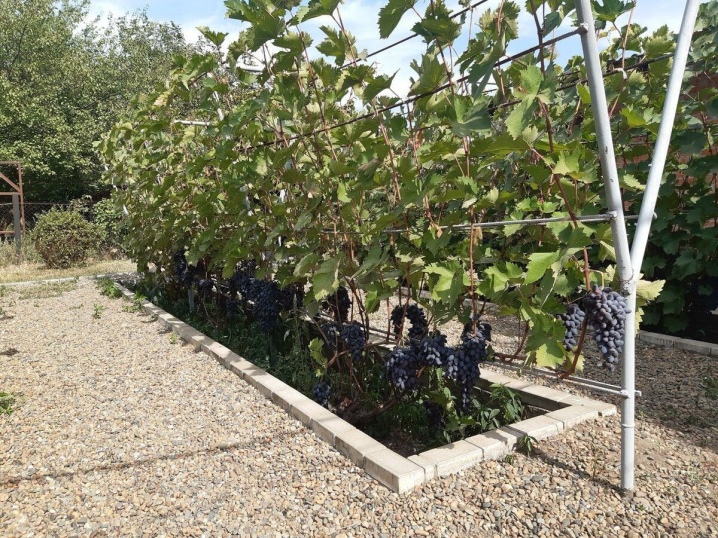
Arched
An option for arranging a cozy courtyard, where it will be pleasant to gather with your family or friends. Planting a vineyard near the arches makes it possible to organize recreation and walking areas. There are two options for performing an arched structure:
- pillars with crate, concreted into the ground;
- bent metal pipes, concreted into the ground.
The second option is more popular, as it looks more attractive and does not require much effort during installation. Arched supports are primarily decorative structures, therefore they are more common in the southern regions.

How to do it yourself?
First you need to choose the material from which the support will be made. To create a trellis, metal, wood or plastic are used. Each material has its own pros and cons.
Wooden supports
Decorative stands are popular with gardeners. The downside is a short service life, literally in 5-7 years, wooden pillars become unusable, starting to rot in the ground. The advantages of supports include:
- environmental friendliness;
- availability;
- ease of installation;
- decorativeness.
Wooden poles are inexpensive, which also makes them popular. Among the disadvantages are susceptibility to rotting and mold, which quickly destroys the base, and then the entire structure. To prevent premature aging of the pillars, it is necessary to carry out a protective surface treatment every year.
To create supports, preference should be given to hard species: oak, ash or chestnut. Before installation, you will need to process the lower part of the support by soaking it in a 5% solution of copper sulfate.
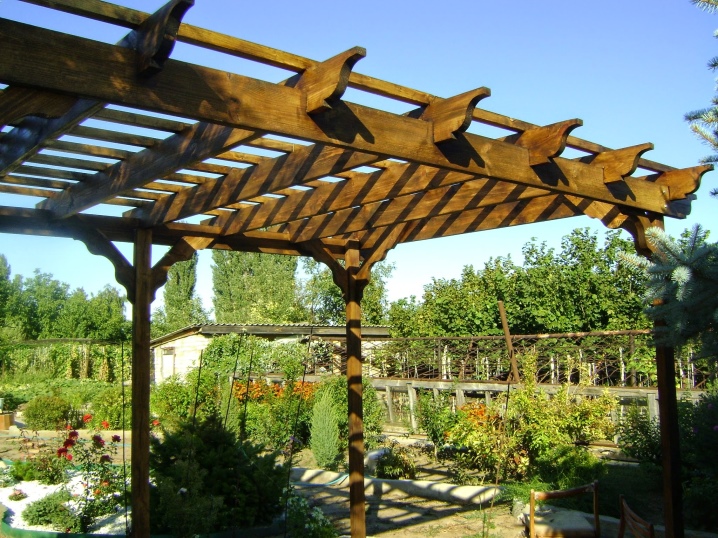
Metal
Steel supports are the most durable option, which is characterized by high strength and structural stability... For the construction of trellises, steel pipes are usually used, the inner diameter of which does not exceed 6 cm. When designing future structures, it is necessary to take into account that the extreme pillars will take the main load, therefore their diameter should be larger than that of intermediate structures.
Advantages of metal supports:
- long service life;
- resistance to high loads;
- no deformation even in strong winds.
The disadvantages include the need to use a welding machine to assemble even a simple design. Also, every 5 years it is required to carry out surface treatment with anti-corrosion compounds.
The high cost and complexity of manufacturing make metal supports less in demand among gardeners. It will be difficult for one person to assemble the pillars by hand. Therefore, preference for such constructions should be given if there are assistants.
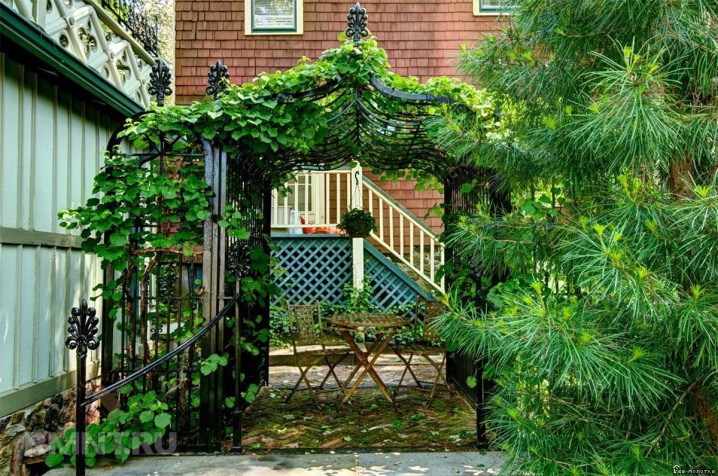
Plastic
Recently, the manufacture of supports from plastic pipes has become popular. The main advantages of the structures:
- long service life;
- resistance to temperature extremes, precipitation and other adverse factors;
- availability;
- simplicity and speed of installation.
To install the supports, you will need a special soldering iron, which is best left to an experienced user. The disadvantage of plastic poles is that they are not suitable for tall vineyards, which can bend pipes with their mass.
To arrange transverse rows, a copper or aluminum wire 3-4 mm thick is pulled between the plastic supports. Also popular on the market are tapestries made of fiberglass reinforcement.
Inexpensive and affordable material not only withstands heavy loads and exhibits excellent corrosion resistance, but also serves for a long time and performs a decorative function.
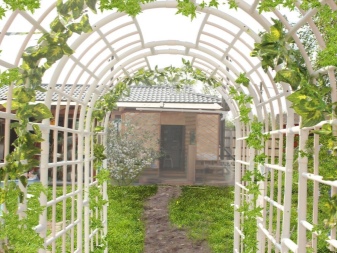
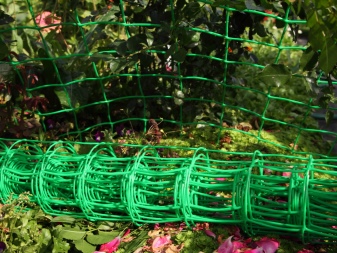
For self-installation, single-plane trellises are more suitable. Such structures are easy to manufacture and do not require special equipment for installation. It is worth considering the features of the construction of supports, depending on the selected material.
Before assembling the first section of wooden trellises, it is necessary to prepare:
- wooden posts - 4 pieces;
- wire - 15 meters;
- crossbeams - 4 pieces, 400-500 mm each;
- cement-sand mixture.
The assembly of wooden supports for grapes is carried out according to the following scheme.
- First, they dig holes for future supports, the diameter of which coincides with the supports of the pillars, and the depth reaches 80 cm.The distance between the holes is 40-50 cm.
- Sand is poured onto the bottom of the recesses, the layer thickness is 20 cm.
- At the base of the pillars, thrust bearings are installed to increase the stability of the structure.
- Next, pillars are placed and the foundation is cemented with a high strength composition.
- Crossbars are installed in the upper and lower parts, which will hold the structure.
- Holes for wire are provided in the posts. The first transverse row runs 40 cm above ground level. Between the rows, 45-50 cm further retreat.
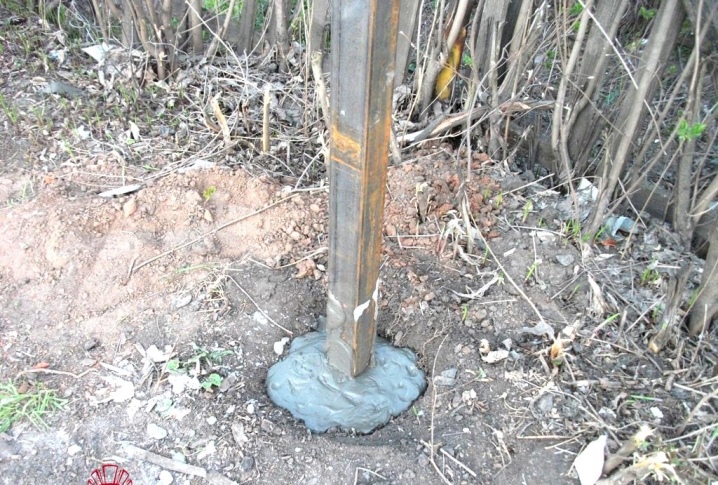
At the end, the last row of wire is tied up 5 cm from the top crossbar. At this stage, the installation is complete. It is important to treat the surface of wooden trellises before installing wooden trellises to prevent decay.
Plastic pipes are great for single-plane support. The scheme is the same as in the case of installing wooden poles. Additional recommendations:
- in order to increase the tightness of the structure, it is worth connecting the posts to the upper crossbar with corners for plastic pipes;
- fastening is best done with glue or self-tapping screws;
- reinforcement installed in the pits under the foundation will help to make the structure more durable.
Gardeners advise against making too high plastic supports. Otherwise, a stepladder is required for harvesting.
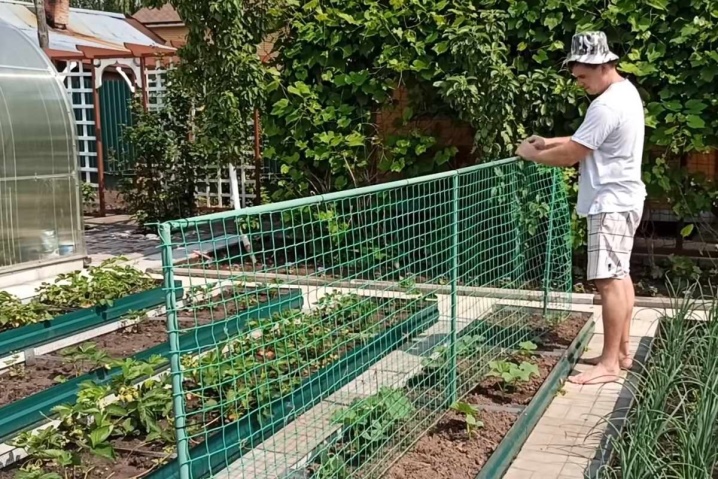
The installation of a two-plane support deserves special attention. This design stands out for its strength characteristics and long service life. For the assembly of the trellis, mainly metal pipes are used.
Materials for creating a two-plane support:
- steel pipes - 4 pieces with a diameter of up to 50 cm and a length of 2-2.5 m;
- metal jumpers - 2 pieces, 1.3 m long;
- horizontal supports - 2 pieces, 2-3 m long;
- wire - 1 coil 30 mm thick;
- crushed stone or small stones;
- cement-sand mixture.
You will also need a welding machine. The assembly diagram of the structure is simple:
- First, pits 80 cm deep are made in the ground.
- Next, two triangles are welded from the pipes, which will act as end supports.
- The triangles are driven into the prepared grooves with a downward angle.
- The pits are covered with small stone or crushed stone, and then the layers are carefully tamped.
- The base is poured with cement and the mixture is allowed to harden and set.
- Next, the triangles are connected using horizontal jumpers and the first row of wire is welded to the support. The mounting height should not be less than 20 cm from the ground surface.
- The next row is placed at a height of 30 cm from the first; a distance of 40 cm is maintained between the rest.
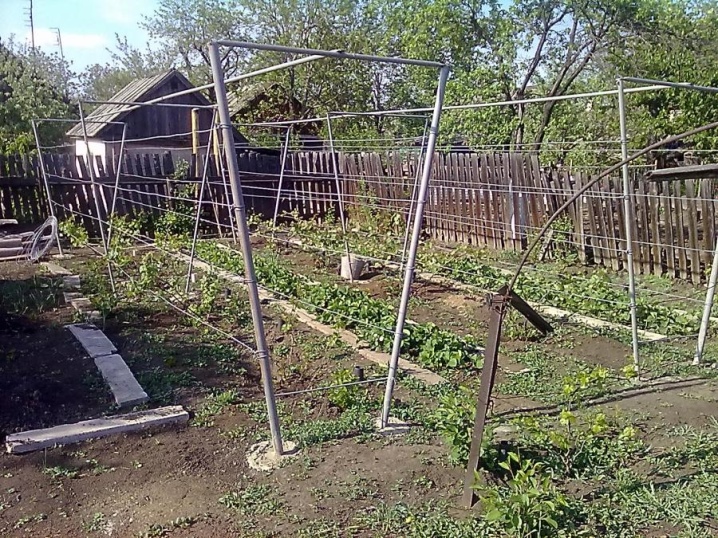
It is best not to make the struts too high, despite the fact that they can withstand heavy loads. When the structure is ready, it remains to tie the grapes to the trellis.
When organizing a support for grapes, every detail must be carefully considered. Let's take a look at common mistakes.
- An improperly organized space in which vineyards grow alongside trees or other plants. Extraneous vegetation creates unnecessary shadow, due to which the vine dies.
- Small spacing between rows, which makes it inconvenient to handle the vine. Also, gardeners often leave too much space between the trellises, which reduces the functionality of the site due to the fact that the grapes grow.
- Wrong choice of support depending on the grade.For example, it is better to use two-plane trellises to tie up vigorous vines.
- Lack of drawings to ensure the correct choice of materials and reliable installation of the structure.
- Installation of high supports that are almost impossible to maintain: harvest or cut the tops of the vine.
- No pretreatment of materials to prolong the life of the support. So, for example, wood must be coated with special compounds against decay, and metal - against rust.
It is not difficult to make a beautiful support for the vine if you approach the process carefully.
It is important not only to choose the type of support, but also to decide on the materials, prepare drawings.
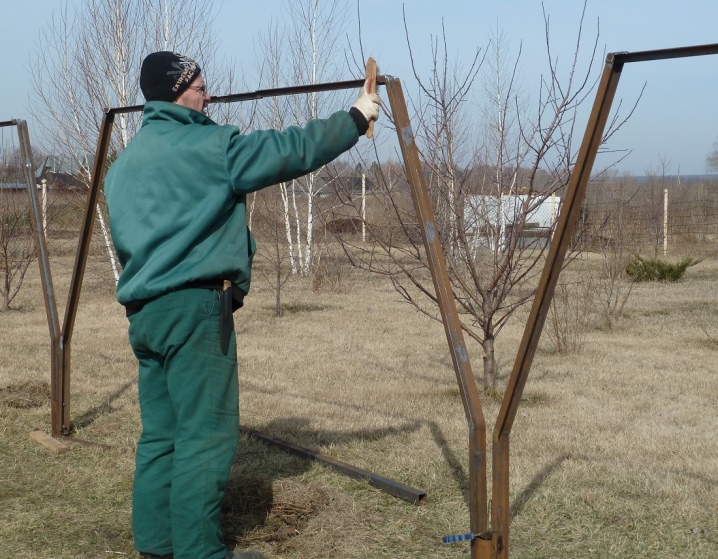
Where to install?
The grape support is a permanent structure that allows the vines to grow vertically. With the right choice of place for installing the trellis, it will last a long time and improve the characteristics of the variety. Basic installation guidelines:
- supports should stand in well-lit areas;
- the rows of the future vineyard should go from north to south;
- a distance of 2 or more meters must be maintained between the rows.
It is possible to effectively use the space even in a small area by planting near the support of other crops. Vegetables or herbs will grow well next to grapes.
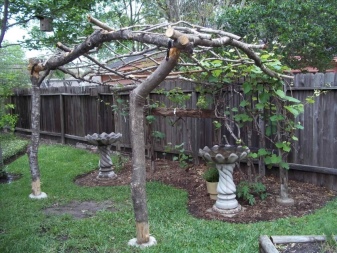
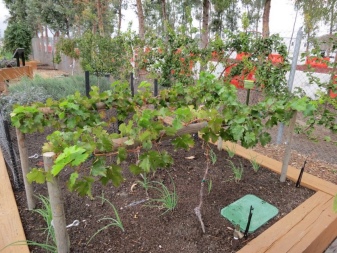
How to tie up grapes correctly?
Tying the vine in the spring is a mandatory procedure, the need for which arises when cultivating a plant. This is the only way to ensure the correct growth of the vine and achieve an excellent harvest. Tying the grapes requires extra care, as there is always a risk of breaking the vine.
Gardeners distinguish two types of garters.
- Dry... Designed for tying shoots, on which fruits are formed, and replacement knots. At the very beginning, the vine branches are carefully bent to the first wire row, counting from the bottom, and then the vine is guided horizontally. The knots are fixed on supports, which allows them to grow close to the tensioned wire that sets the direction.
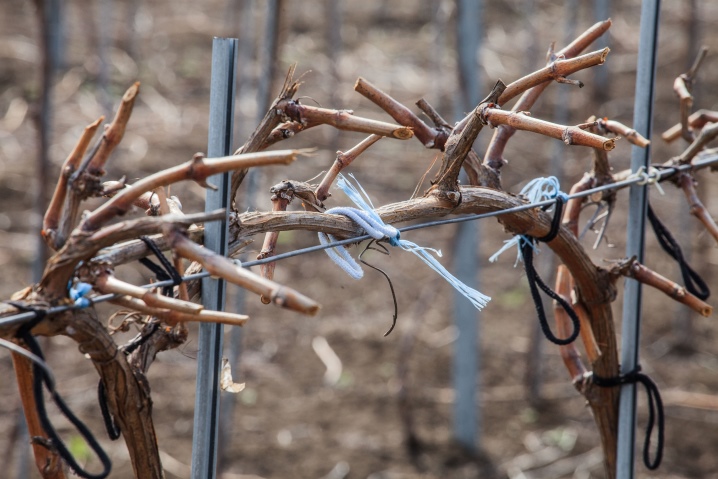
- Green... For young shoots that can be easily tied. The garter is started when the grapes reach a height of 35-40 cm. The vertical garter allows the plant to grow faster by increasing the amount of sunlight. The peculiarity of the green garter is that it is performed several times, as soon as the shoots reach the next level of the wire.
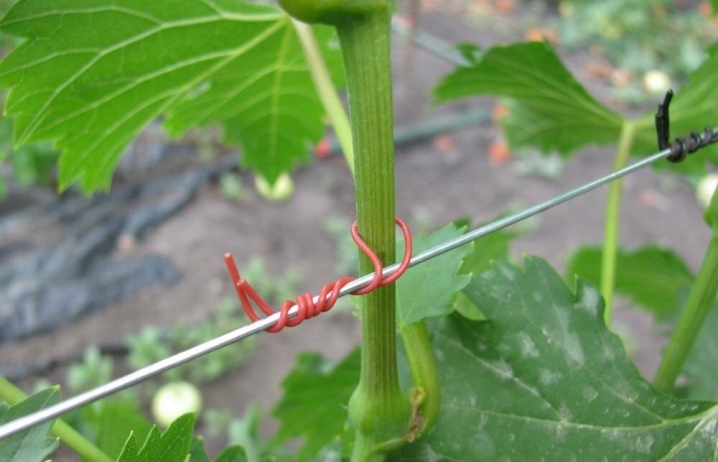
Before performing the procedure - regardless of its type - it is necessary to prune old and damaged shoots so that the plant does not waste energy on weak shoots.
Additional recommendations for landscaping the site with a vine.
- To make the site look well-groomed, it is recommended to make supports from reliable and durable materials... It is better to give preference to metal posts, the surface of which is treated with anti-corrosion compounds or paint.
- You can get rid of the empty space between the supports using a plastic mesh, which will replace ugly wire... A growing vine is also tied to it. The peculiarity of this solution is the ease of installation.
- If you find damage to the eyes on the vine, do not start tying the plant.... It is better to wait for the vine to open the spare or dormant buds, and only then resort to the procedure.
The supports not only ensure efficient growth of the grapes, but also help to decorate the plot and equip the recreation area.
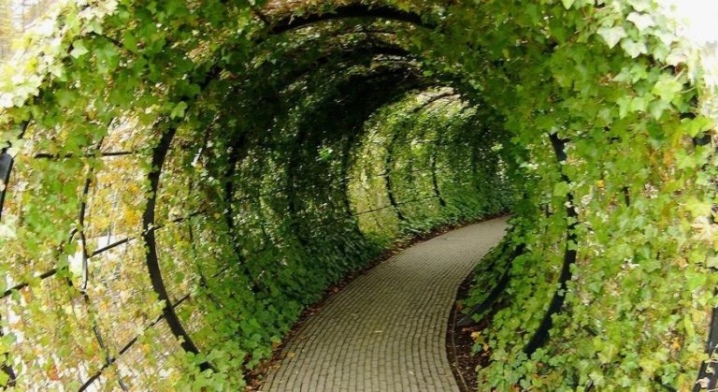













The comment was sent successfully.